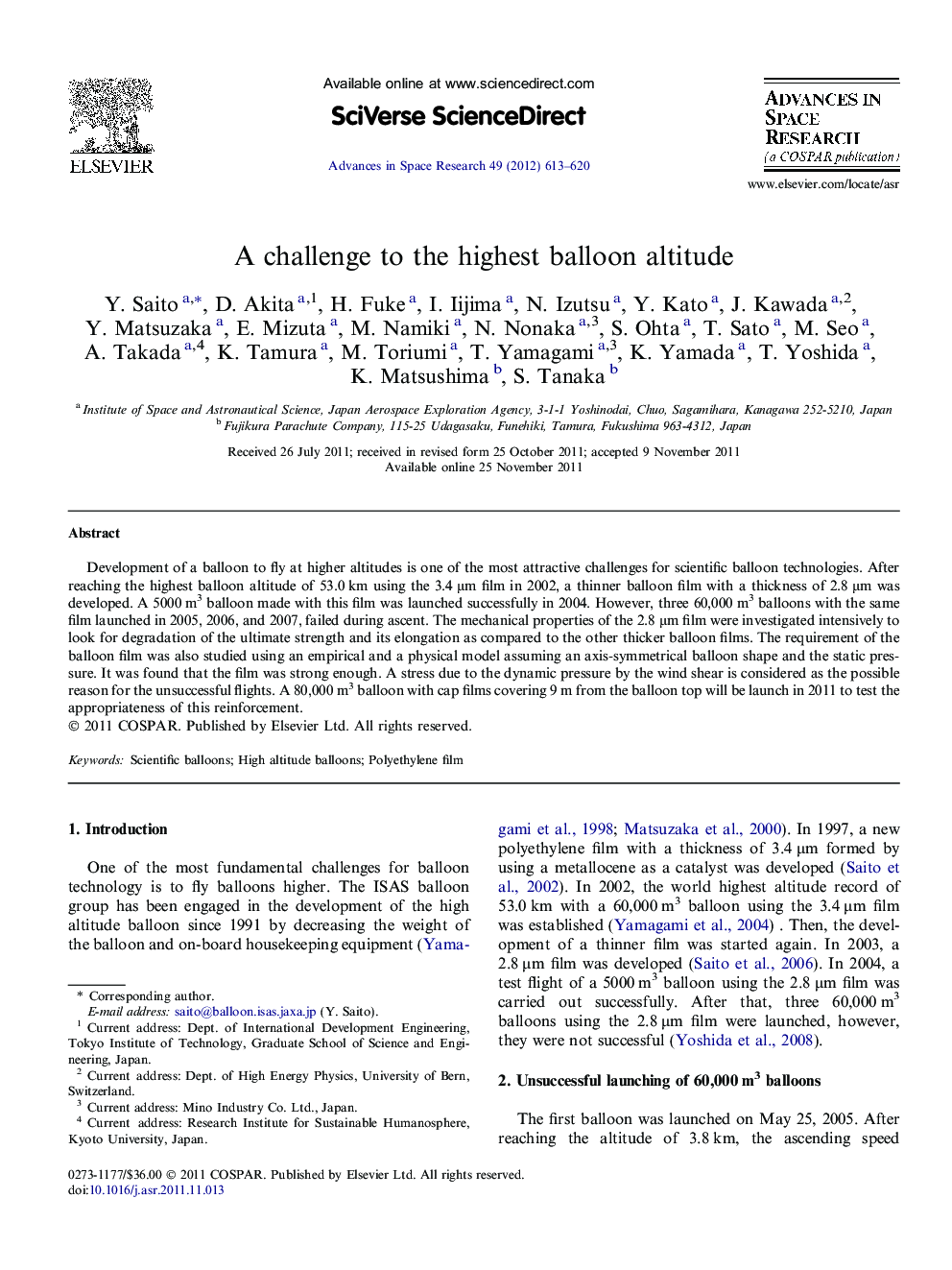| Article ID | Journal | Published Year | Pages | File Type |
|---|---|---|---|---|
| 1765000 | Advances in Space Research | 2012 | 8 Pages |
Development of a balloon to fly at higher altitudes is one of the most attractive challenges for scientific balloon technologies. After reaching the highest balloon altitude of 53.0 km using the 3.4 μm film in 2002, a thinner balloon film with a thickness of 2.8 μm was developed. A 5000 m3 balloon made with this film was launched successfully in 2004. However, three 60,000 m3 balloons with the same film launched in 2005, 2006, and 2007, failed during ascent. The mechanical properties of the 2.8 μm film were investigated intensively to look for degradation of the ultimate strength and its elongation as compared to the other thicker balloon films. The requirement of the balloon film was also studied using an empirical and a physical model assuming an axis-symmetrical balloon shape and the static pressure. It was found that the film was strong enough. A stress due to the dynamic pressure by the wind shear is considered as the possible reason for the unsuccessful flights. A 80,000 m3 balloon with cap films covering 9 m from the balloon top will be launch in 2011 to test the appropriateness of this reinforcement.
